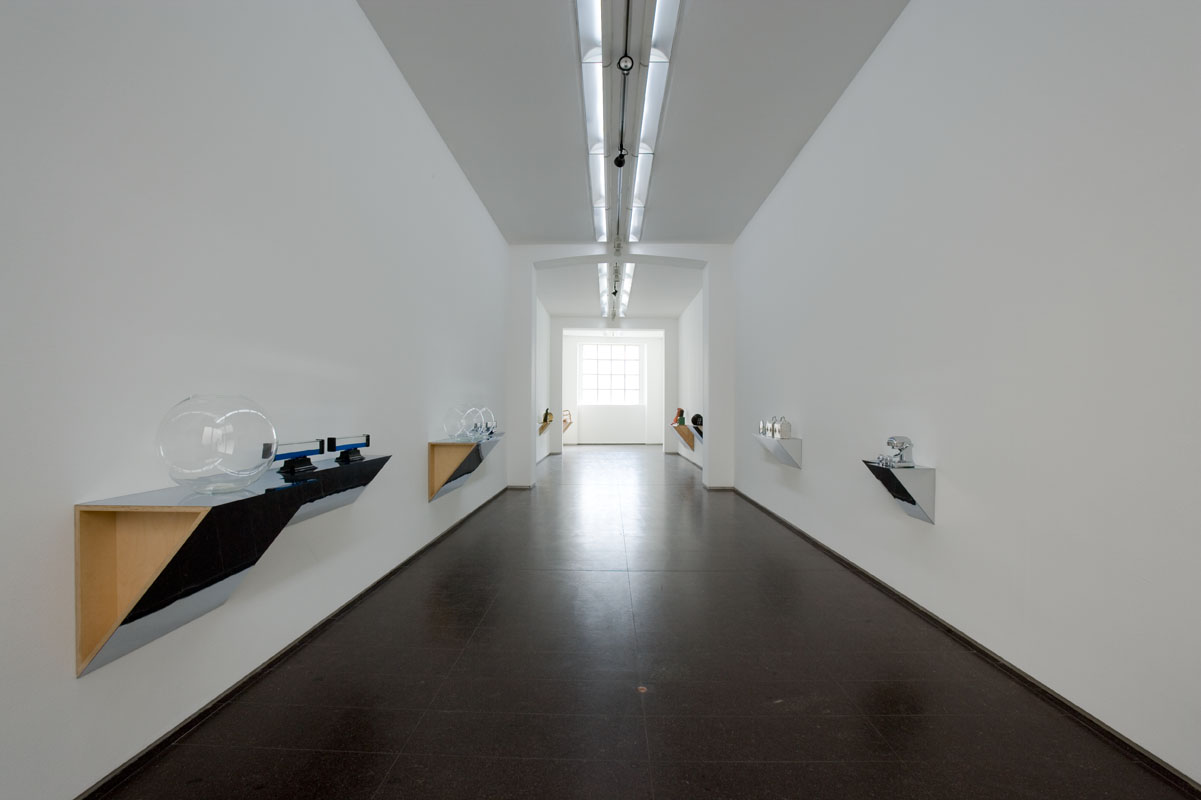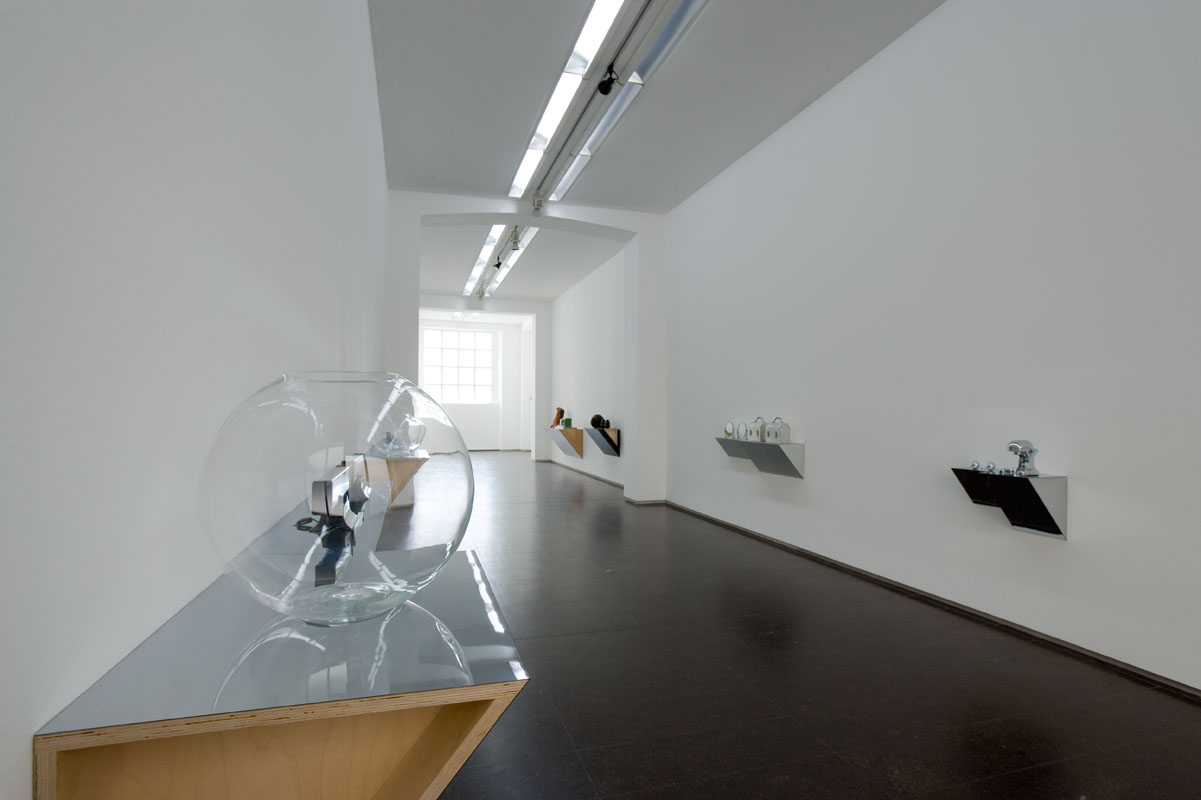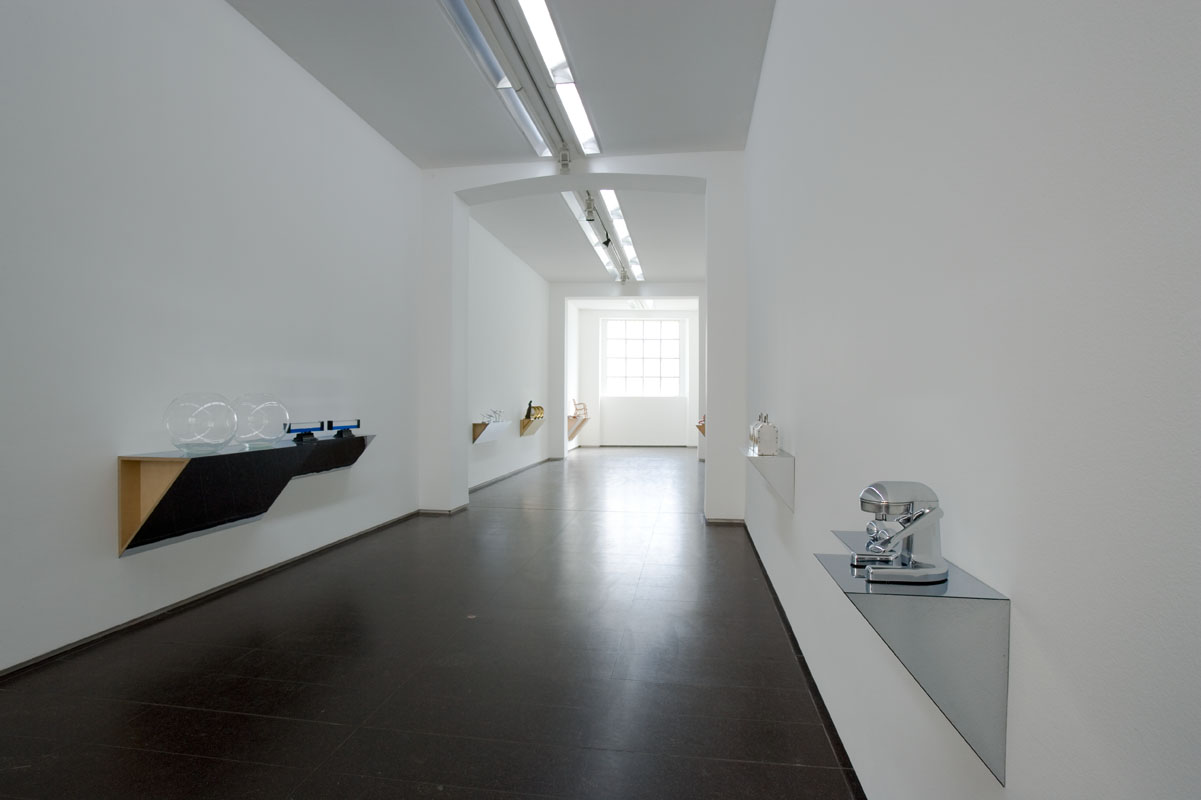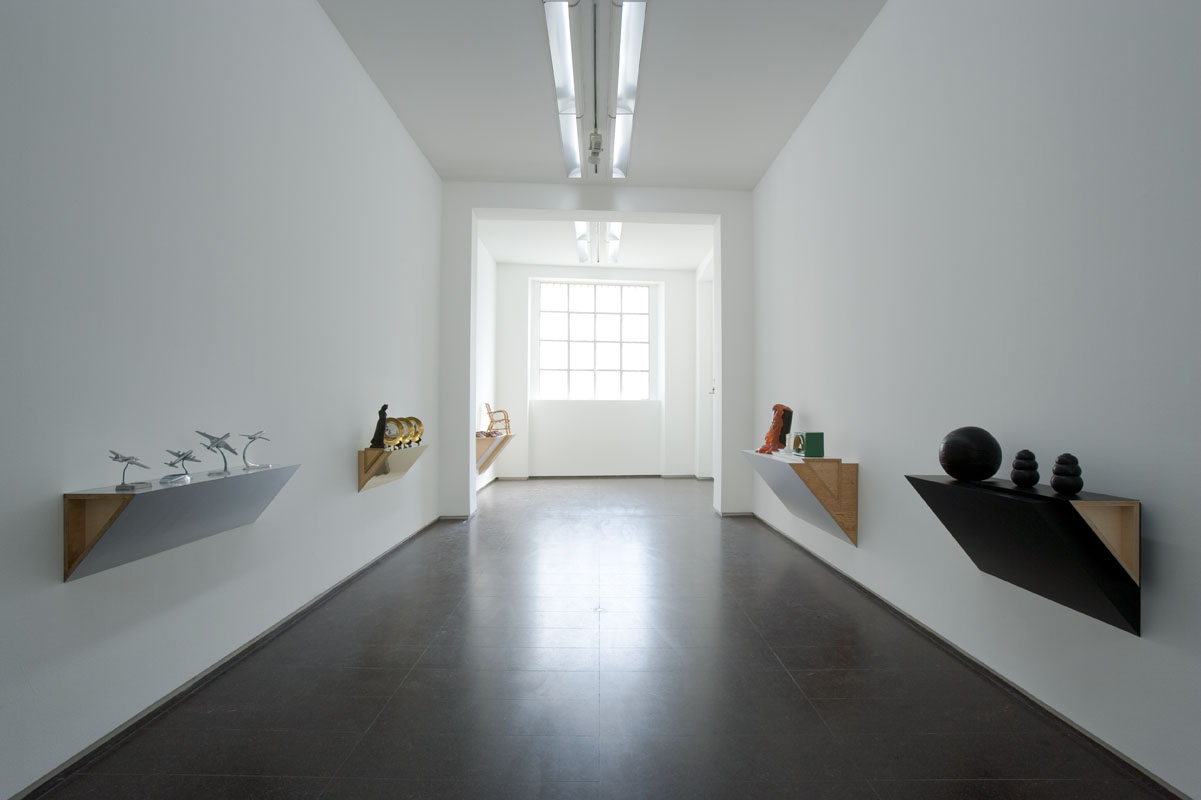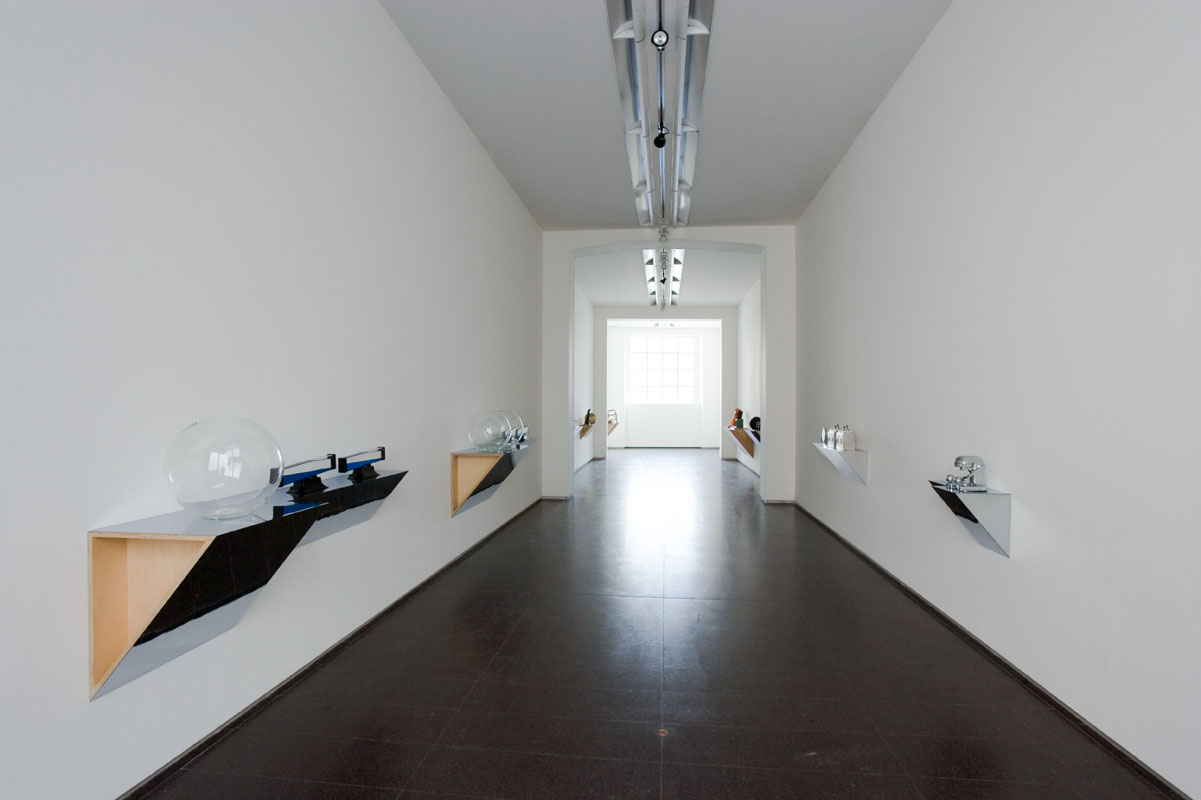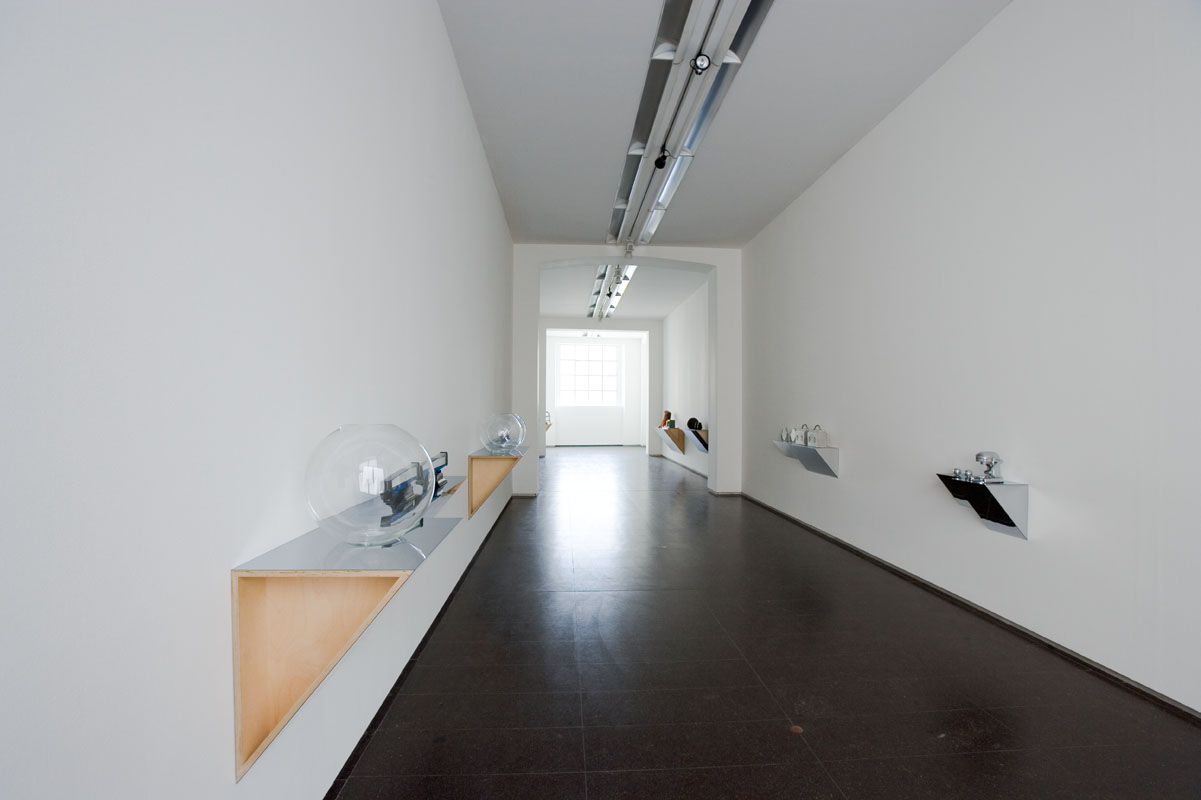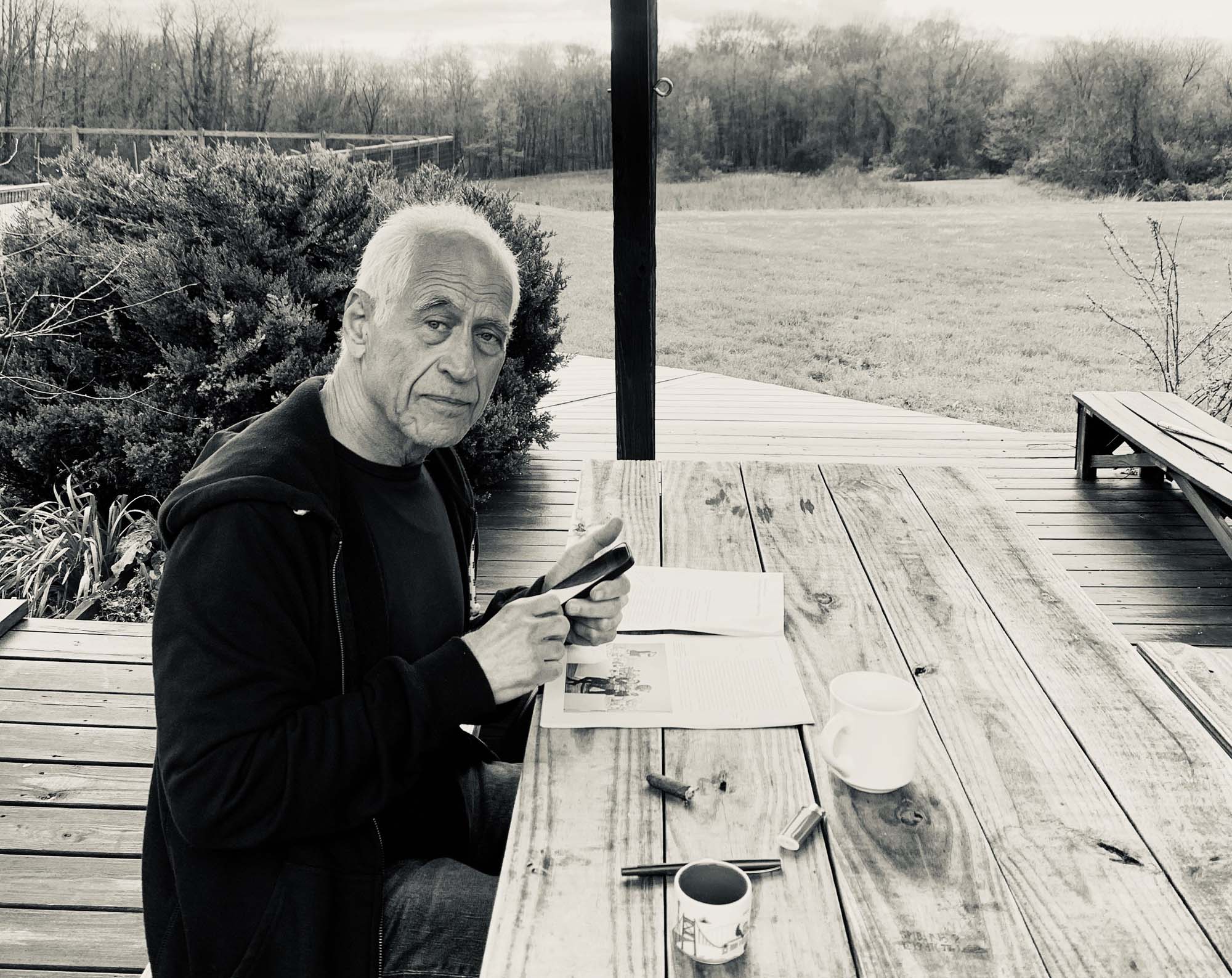The new exhibition of Haim Steinbach’s work covers some of the most important phases of his artist’s career and documents the longstanding relationship between the artist and the Lia Rumma Gallery.
The works on display were made between 1983 and 2006. Haim Steinbach’s works are made from objects found and collected from everyday contexts. The artist appropriates them, isolates them and places them alongside other objects of a different kind, creating a sort of sign language with multiple meanings. The objects are usually placed on shelves and together form a single work. Even the shelves can be considered to be objects in their own right with their own specific function. In the works which date from the early eighties, the shelves were handmade and took the form of discovered objects. For this reason, as from 1984, the shelves began to take on standardised forms whose size depended on the dimensions of the objects they were intended to support. From this point onwards, Steinbach’s works took on a new formal rigour. The formulation and juxtaposition of the objects and shelves belong to a tradition whose origins can be traced back to the reliefs of constructivist artists and the installations of Minimal Art.
The orderly arrangement and combination of objects of different origins evoke the antithetical concepts of order and chaos which so typify contemporary society. Some of the works in the exhibition derive from direct encounters between the artist, places he has visited and people he has met over the years. For example, Steinbach’s work Untitled (sandals, chair), made in 1987, stems from an amusing episode in which several pairs of children’s sandals and a chair were purchased from a flea market in Naples. Another work inspired by Naples is entitled Neapolitan tableau, which also dates to 1987; it was made as the result of the purchase of several objects found in antiques shops located near to the Lia Rumma Gallery in Naples. By contrast, in the case of works made especially for a collector, such as Untitled (4 airplanes), the artist has selected a specific type of object which represents a sort of portrait of the person who he has encountered.

